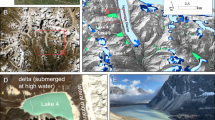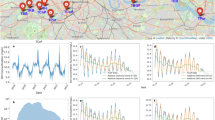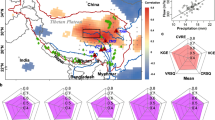Abstract
WITH considerable diffidence I venture to offer an explanation of the diurnal current change described by Dr. G. D. Hale Carpenter in NATURE of August 30, p. 311. In equatorial regions a twelve-hourly baro-metric oscillation attains its maximum amplitude of approximately 0.9 mm. of mercury. The maxima occur daily at about 9.10 A.M. and P.M. Thus, in the absence of major barometric fluctuations, the pressure is on the decrease from about 9 A.M. until early in the afternoon at a time corresponding approximately with the time of reversal of the current. It follows that the lake level will be rising during this period, and hence an overflow into the deltaic marsh. The volume of river water entering the swamp should be sufficient to account for the reversal occurring about one hour previous to the time of the barometric minimum.
Similar content being viewed by others
Article PDF
Author information
Authors and Affiliations
Rights and permissions
About this article
Cite this article
SILVESTER, N. Lake Victoria and the Flow of the Yala River. Nature 114, 536 (1924). https://doi.org/10.1038/114536b0
Issue date:
DOI: https://doi.org/10.1038/114536b0



